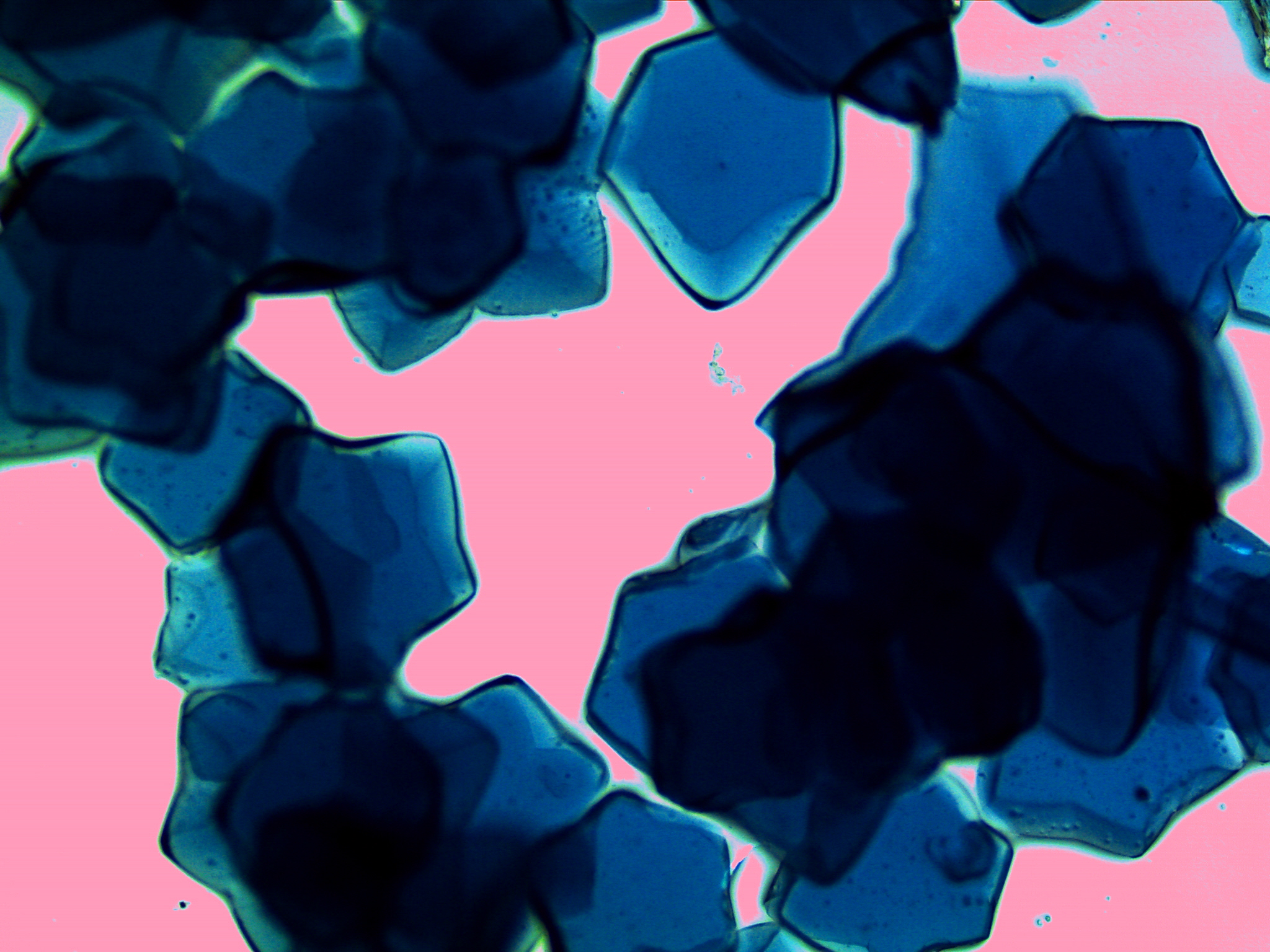
A microscopic image provided by the OSU Department of Chemistry that shows aqueous metal-oxide crystals. The metals involved are zinc, cromium and aluminum. Source: OSU
After decades of eluding researchers because of chemical instability, key metal-oxide clusters have been isolated in water, a significant advance for growing the clusters with the impeccable control over atoms that’s required to manufacture small features in electronic circuits.
Oregon State University chemists created the aqueous cluster formation process. It yielded a polyoxocation of zinc, aluminum and chromium that is not protected by the organic ligand shell that is usually required to capture such molecules from water.
“Our discovery is exciting in that it provides both new fundamental understanding and new materials, and useful applications are always built on a foundation of fundamental understanding,” said May Nyman, a professor of chemistry at Oregon State.
Metal oxides – compounds produced when metals combine with oxygen – serve a variety of important purposes. For example, titanium dioxide is a catalyst that degrades pollutants, and aluminum oxides and iron oxides are coagulants used as the first step in purifying drinking water.
“Metal oxides influence processes everywhere,” Nyman said. “They control the spread of contaminants in the environment. They are the touchscreen of your cellphone. The metal-oxide cluster forms are in your body storing iron and in plants controlling photosynthesis. Most of these processes are in water. Yet scientists still know so little about how these metal oxides operate in nature, or how we can make them with the absolute control needed for high-performance materials in energy applications.”
Results of the research by the OSU College of Science’s Center for Sustainable Materials Chemistry were recently published in the journal Chem.
“We devised some synthetic processes so we can trick the clusters into forming,” Nyman said. “The main thing that we do is control the chemistry so the clusters grow not in the solution where they are highly reactive, but only at the surface, where the water evaporates and they instantly crystallize into a solid phase. Once in the solid phase, there’s no danger of reacting and precipitating metal oxide or hydroxide in an uncontrolled way.”
The clusters created in the research are spherical, contain about 100 atoms, and measure 1 nanometer across.
“Once we have synthesized these, we can prepare a solution of them, and they’re all exactly the same size and contain the same number of atoms,” Nyman said. “This gives us control over making very small features.
“The size of the feature is controlled by the size of the cluster. All metals on the periodic table act differently, and only a few have the right chemistry that behaves well enough to yield these clusters. For the rest of them, we need to innovate new chemistries to discover their cluster forms. The transition metals are particularly hard to control, yet they are earth-abundant and some of the most important metals in energy and environmental technologies.”
Metal-oxo clusters are usually isolated from water with ligands – molecules that protect the cluster surface and prevent precipitation of metal hydroxides.
In this study, an OSU team that included graduate students Lauren Fullmer, Sara Goberna-Ferron and Lev Zakharov overcame the need for ligands with a three-pronged strategy: pH-driven hydrolysis by oxidative dissolution of zinc; metal nitrate concentrations 10 times higher than conventional syntheses; and azeotropic evaporation for driving simultaneous cluster assembly and crystallization at the surface of the solution.
Meanwhile, the team’s computational collaborators in Catalonia provided a deeper understanding of the most stable arrangement of metal and oxygen atoms in the cluster.
“Contrary to common cluster growth, the fully assembled cluster is never detected in the reaction solution,” Nyman said. “Because the reactive clusters do not persist in solution, uncontrolled precipitation of metal hydroxide is avoided. In this sense, we have discovered a new way metal oxides can grow.”



